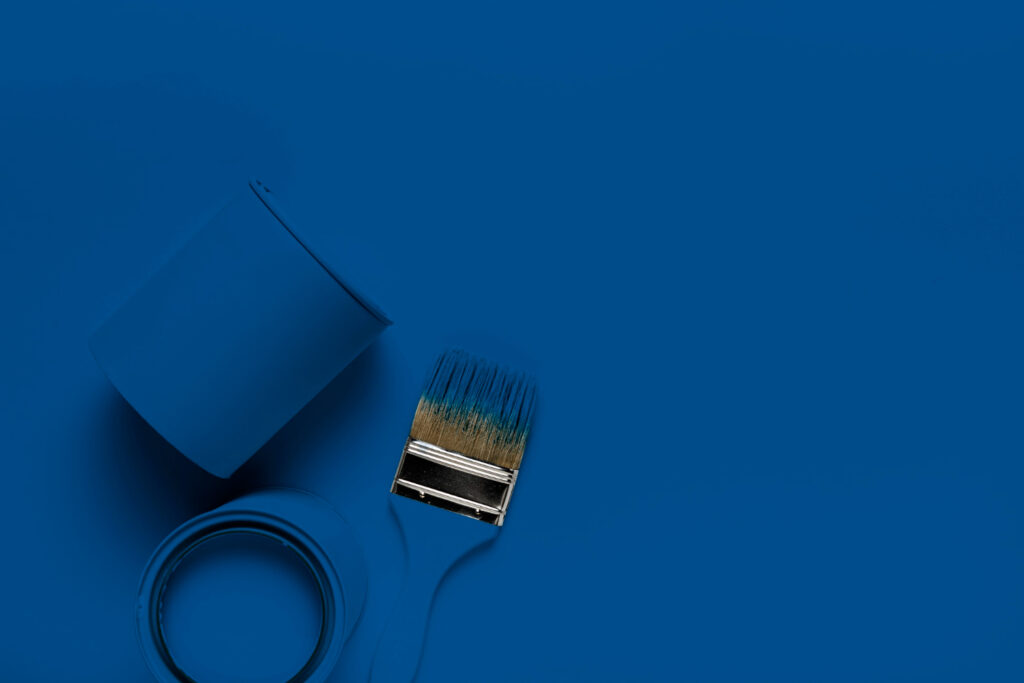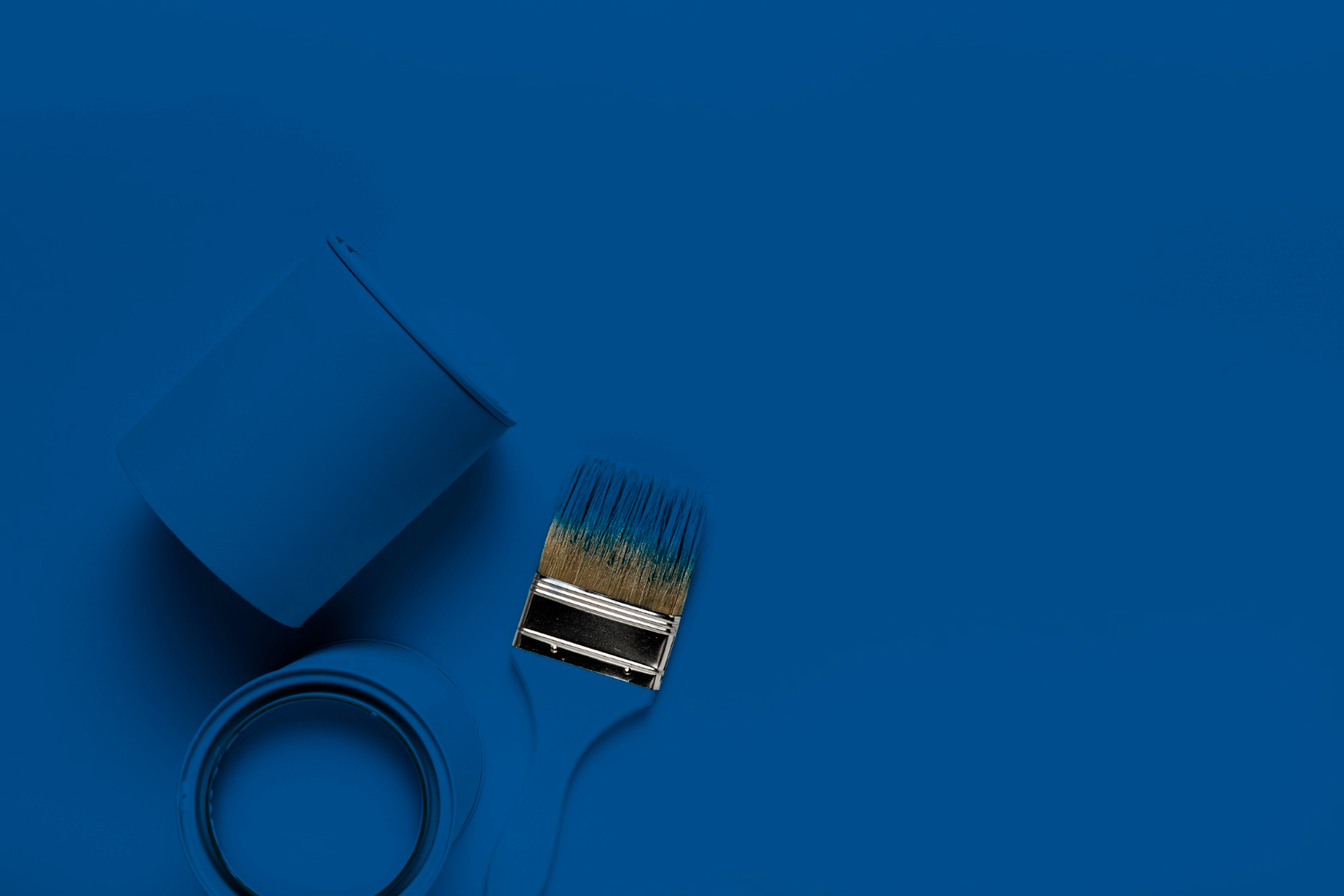Introduction
When it comes to transforming the atmosphere of a room, nothing quite matches the impact of a fresh coat of paint. Among the spectrum of colors available, blue wall paint stands out for its ability to evoke a sense of serenity and tranquility. In this article, we’ll explore the world of blue wall paint, offering insights on choosing the right shade, preparation, and a step-by-step guide to painting your walls. We’ll also discuss the psychological impact of blue, its versatility in different settings, and provide some useful tips for maintaining its beauty.

Table of Contents
The Psychology of Color
Color has a profound influence on our emotions and mood. Blue is often associated with calm, serenity, and tranquility. It has a soothing effect and is known to lower stress levels. By choosing blue wall paint, you can create a peaceful and welcoming atmosphere in your space.
Choosing the Right Shade of Blue
Before you begin your painting project, it’s crucial to select the right shade of blue. There are countless shades to choose from, ranging from light and airy to deep and moody. Consider the existing decor and lighting in your room to determine the most suitable shade. Lighter blues can make a room feel more spacious, while darker shades can add a touch of drama.
Preparing the Wall
To achieve a flawless finish, proper wall preparation is essential. Start by cleaning the wall to remove dirt, dust, and grease. Fill any cracks or holes with spackling, and sand the surface until it’s smooth. If the wall has any imperfections, you may need to apply a layer of drywall compound and sand it again.
Tools and Materials You’ll Need
TGather the necessary tools and materials for your painting project. You’ll need items such as paintbrushes, rollers, painter’s tape, drop cloths, and of course, your chosen blue wall paint. Having the right equipment ensures a smoother painting process.
Step-by-Step Guide to Painting a Blue Wall
6.1. Clear the Room
Remove as much furniture and decor from the room as possible. If some items can’t be moved, cover them with drop cloths to protect them from paint splatter.
6.2. Protect Floors and Furniture
Lay down drop cloths to protect your floors. Use painter’s tape to cover the edges of baseboards, windows, and any fixtures you don’t want to paint.
6.3. Prime the Surface
Priming the wall helps the paint adhere better and provides a more even finish. Let the primer dry thoroughly before moving on.
6.4. Cutting In
Start by “cutting in” along the edges of the wall with a paintbrush. This creates a clean line between the wall and other surfaces.
6.5. Rolling the Paint
Use a roller to apply the blue paint to the main wall areas. Work in small sections, ensuring even coverage.
6.6. Applying a Second Coat
For a more vibrant and even finish, apply a second coat of paint once the first coat has dried.
Tips for a Professional Finish
- Work in natural light to see imperfections.
- Paint from top to bottom for a cleaner look.
- Keep a wet edge to prevent visible brush or roller marks.
Cleaning Up
After you’ve completed your painting project, remove painter’s tape and allow the paint to dry completely. Clean your brushes and rollers thoroughly. Put furniture back in place and enjoy your newly transformed space.
Maintenance and Touch-Ups
Blue wall paint can maintain its beauty with minimal effort. Regular dusting and occasional gentle cleaning will keep your walls looking fresh. If there are scuffs or marks, touch up the paint to maintain the pristine look.
Benefits of Blue Wall Paint
- Creates a sense of serenity and calm.
- Enhances the visual appeal of your space.
- Versatile and suitable for various settings.
- Can make a room feel more spacious.
Blue Wall Paint in Different Settings
11.1. Blue in Bedrooms
Blue is a popular choice for bedrooms as it promotes relaxation and a sense of tranquility, which is ideal for a restful night’s sleep.
11.2. Blue in Living Rooms
In the living room, blue can create a cozy and inviting atmosphere, making it a great choice for family gatherings and entertainment.
11.3. Blue in Bathrooms
Blue in the bathroom can evoke a spa-like ambiance, turning your bath time into a relaxing retreat.
Color Combinations
Blue pairs well with various colors, including white, gray, and earth tones. These combinations can add depth and sophistication to your space.
Frequently Asked Questions (FAQs)
- Is blue wall paint suitable for small rooms?
- Blue can work in small rooms, but lighter shades are recommended to make the space feel more open.
- How can I choose the perfect shade of blue for my room?
- Consider your room’s lighting and existing decor. Test paint samples on the wall to see how they look in different lights.
- Do I need to hire a professional painter for blue wall paint?
- While hiring a professional is an option, painting a room in blue is a manageable DIY project with the right tools and knowledge.
- Is blue wall paint easy to clean and maintain?
- Blue wall paint is relatively easy to clean with mild detergent and water. Regular dusting helps maintain its freshness.
- Can I combine blue with other colors for a unique look?
- Absolutely! Blue pairs well with a range of colors. Experiment with different combinations to achieve the desired effect.
Conclusion
Blue wall paint has the power to transform any space, creating a serene and inviting atmosphere. Whether you choose a light, airy blue or a deep, moody shade, this color can enhance the beauty of your room. With the right preparation and techniques, you can achieve a professional finish. Enjoy the benefits of blue wall paint in various settings and let it infuse your space with elegance and tranquility.
Now, unleash your creativity and give your space a fresh new look with the captivating


1 thought on “Blue Wall Paint Adding Elegance To Your Space”